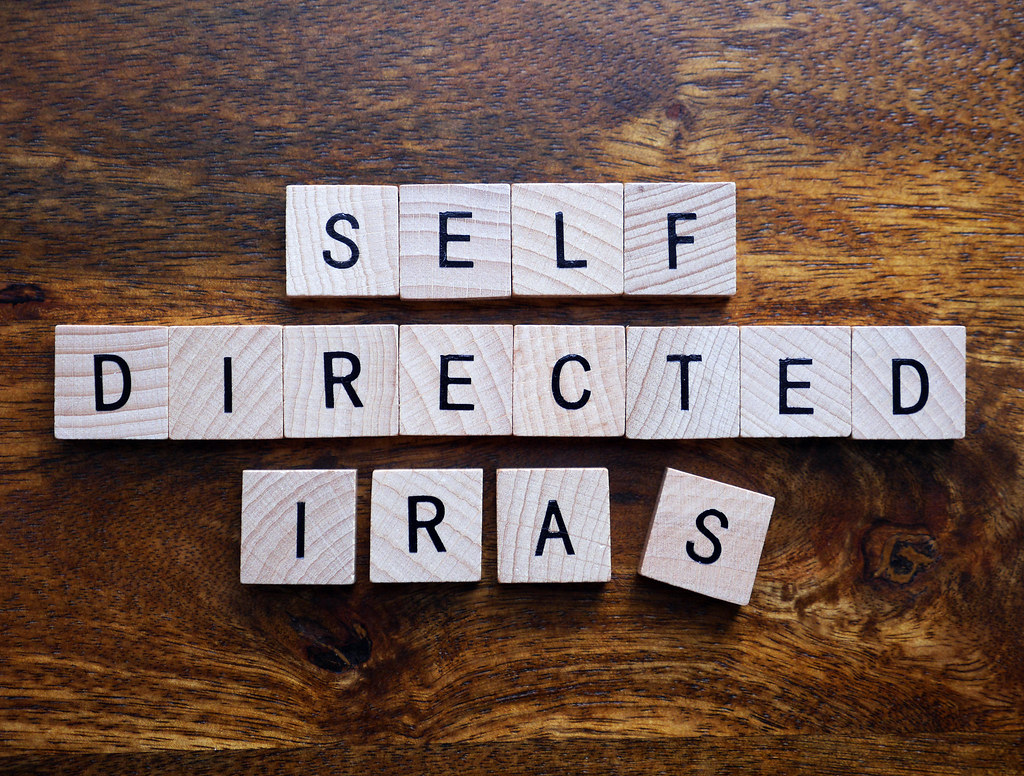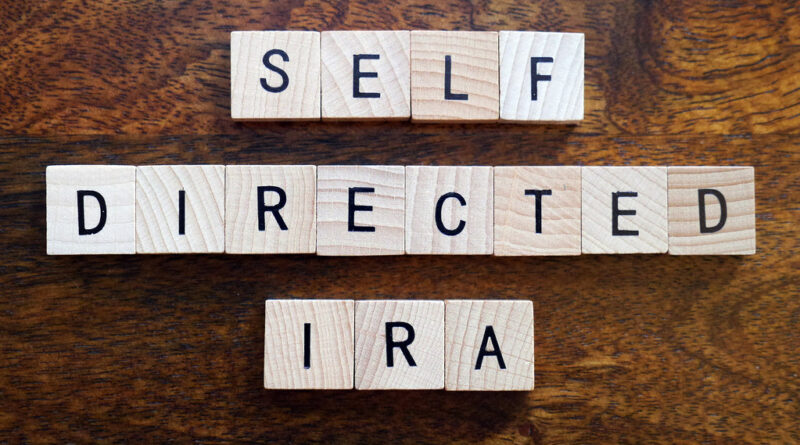The Ultimate Self-Directed IRA Checklist: 10 Must-Know Tips
Are you a real estate investor looking for a new way to grow your retirement savings? If so, investing in real estate using a Self-Directed IRA may be the solution you’re looking for. With a Self-Directed IRA, you can invest in a variety of real estate properties, including rental properties, fix-and-flip properties, and raw land, all while enjoying tax advantages and the potential for long-term growth.
However, the process of investing in real estate with a Self-Directed IRA can be complex and confusing if you don’t have the right guidance. That’s why we’ve put together this Ultimate Self-Directed IRA Checklist to help you avoid common pitfalls and ensure a successful investment.
Why Invest in Real Estate with a Self-Directed IRA?
Investing in real estate with a Self-Directed IRA offers several benefits for real estate investors, borrowers, and lenders. First and foremost, it provides a way to diversify your retirement portfolio and potentially achieve higher returns than traditional investments.
It also offers tax advantages, including tax-deferred or tax-free growth, depending on the type of account you choose. Additionally, investing in real estate with a Self-Directed IRA allows you to take control of your investments and make your own investment decisions, without relying on a third-party financial institution.
The Importance of The Ultimate Self-Directed IRA Checklist
While investing in real estate with a Self-Directed IRA can be a smart way to grow your retirement savings, it also comes with risks and complexities. That’s why it’s essential to have a comprehensive guide to help you navigate the process and avoid costly mistakes.
The Ultimate Self-Directed IRA Checklist provides just that, offering a step-by-step guide to help you invest in real estate with confidence and ease. By following the tips outlined in this checklist, you can maximize your investment potential and build a secure financial future.
The Ultimate Self-Directed IRA Checklist: 10 Must-Know Tips
Now that you understand the benefits of investing in real estate with a Self-Directed IRA and the importance of The Ultimate Self-Directed IRA Checklist, let’s dive into the 10 must-know tips for a successful investment. From checking eligibility requirements to conducting due diligence and managing the property, this checklist covers all the essential steps you need to take to invest in real estate with a Self-Directed IRA.
1. Check Eligibility Requirements
Before you start investing in real estate with a Self-Directed IRA, make sure you are eligible. Generally, anyone with earned income can open a Self-Directed IRA, but there are income limits and other requirements to be aware of. For example, individuals who are 70 1/2 years old or older are not eligible to make contributions.
In addition, there are certain prohibited transactions that you should be aware of, such as investing in collectibles, life insurance, or S corporation stock. Check with your IRA custodian or financial advisor for specific details about eligibility requirements.
2. Choose a Self-Directed IRA Custodian
Not all IRA custodians allow for self-directed investing, so you’ll need to choose one that does. Look for a custodian with experience in real estate investing and a good reputation. Do your due diligence and compare fees and services before making a decision.
You’ll also want to consider the type of account you want to open. There are two main types of Self-Directed IRA accounts: Traditional and Roth. With a Traditional IRA, contributions are tax-deductible, but distributions are taxed as income. With a Roth IRA, contributions are made with after-tax dollars, but qualified distributions are tax-free. Talk to your custodian or financial advisor to determine which type of account is right for you.
3. Fund Your Account
Once you’ve chosen a custodian, you’ll need to fund your Self-Directed IRA. This can be done through contributions or rollovers from other retirement accounts. Make sure you understand the tax implications of your funding choices and consult with a tax professional if needed.
For example, if you contribute to a Traditional IRA, your contribution may be tax-deductible, but if you exceed certain income limits, your contribution may not be deductible. Rollovers from other retirement accounts, such as a 401(k) or 403(b), may also be subject to taxes if not done correctly. Your custodian or financial advisor can help you understand the tax implications of your funding choices.
4. Understand Prohibited Transactions
There are certain types of transactions that are prohibited when using a Self-Directed IRA for real estate investing. These include self-dealing, using the IRA to benefit disqualified persons, and investing in collectibles. Self-dealing occurs when you use your IRA to buy or sell property to or from yourself, your spouse, or your lineal ascendants or descendants.
Disqualified persons include your spouse, your lineal ascendants and descendants, and any entities in which you own at least 50% of the shares or interest. Investing in collectibles, such as art, antiques, or coins, is also prohibited. Familiarize yourself with these rules to avoid costly mistakes. Your custodian or financial advisor can provide more information about prohibited transactions.
5. Conduct Due Diligence
Before investing in any real estate property, conduct thorough due diligence. This includes researching the property’s history, value, and potential for rental income or appreciation. Consider working with a real estate professional to help you evaluate your options. Due diligence is crucial to ensure that you make a sound investment decision. Some of the factors that you should consider during due diligence include:
- Location: Consider the property’s proximity to schools, shopping centers, transportation, and other amenities.
- Property condition: Inspect the property thoroughly to identify any repairs or renovations that may be necessary.
- Market conditions: Research the local real estate market to determine whether the property is a good investment opportunity.
- Rental income potential: Determine the rental income potential of the property based on local rental rates and demand.
- Property management: Consider whether you will manage the property yourself or hire a property management company.
6. Choose Your Investment Property
Once you’ve done your due diligence, it’s time to choose your investment property. Look for properties that align with your investment goals and risk tolerance. Consider factors such as location, condition, and potential for growth. You should also determine the type of real estate investment that you want to make. Some common types of real estate investments include:
- Rental properties: Properties that generate rental income.
- Fix-and-flip properties: Properties that are purchased, renovated, and sold quickly for a profit.
- Commercial properties: Properties that are used for business purposes.
- Raw land: Undeveloped land that has potential for future development.
7. Purchase the Property
When purchasing a property with your Self-Directed IRA, it’s important to follow the rules and guidelines set by your custodian. Make sure all transactions are made through the IRA, and that you have enough funds to cover any expenses or repairs that may be needed.
The purchase process can vary depending on the type of property you are buying and the state in which it is located. Some common steps involved in purchasing a property include:
- Make an offer: Submit an offer to the seller or their agent.
- Sign a purchase agreement: Sign a legally binding agreement that outlines the terms of the sale.
- Provide earnest money: Provide a deposit that demonstrates your commitment to the purchase.
- Complete due diligence: Conduct a final inspection and review all relevant documents.
- Close the sale: Sign final documents and transfer ownership of the property.

8. Manage the Property
As the owner of the property, you are responsible for managing it. This includes finding tenants, collecting rent, and maintaining the property. Consider hiring a property management company if you don’t have the time or expertise to do it yourself. A property management company can handle tasks such as:
- Advertising the property
- Screening tenants
- Collecting rent
- Handling maintenance requests
- Enforcing lease agreements
9. Report Income and Expenses
As with any investment, you’ll need to report income and expenses related to your Self-Directed IRA real estate property. Make sure you keep accurate records and consult with a tax professional to ensure compliance with IRS rules and regulations.
Your custodian will provide you with an annual report of all transactions in your account, which you can use to prepare your tax return. Some of the income and expenses you should track include:
- Rental income
- Property management fees
- Repairs and maintenance
- Mortgage interest
- Property taxes
10. Review Your Investment Strategy Regularly
Finally, it’s important to review your investment strategy regularly to ensure that it aligns with your goals and risk tolerance. Consider factors such as market conditions, property performance, and your overall financial situation. You may need to make adjustments to your investment strategy over time to ensure that you are on track to meet your retirement goals.
Start Your Self-Directed IRA Real Estate Investment Today!
Investing in real estate with a Self-Directed IRA can be a smart way to grow your retirement savings, but it requires careful planning and due diligence. By following these 10 must-know tips, you can avoid costly mistakes and ensure a successful investment.
Remember to work with a reputable custodian and consult with a financial advisor and tax professional before making any investment decisions. With the right guidance and a solid investment strategy, you can build a secure financial future with real estate investing.
Now that you have The Ultimate Self-Directed IRA Checklist, you’re ready to start investing in real estate using your Self-Directed IRA. Remember to follow each of the 10 tips outlined in this article to ensure a successful investment. If you have questions or need help getting started, contact us today. Our team of experts is here to help you navigate the complex world of Self-Directed IRA real estate investing and build a secure financial future.
